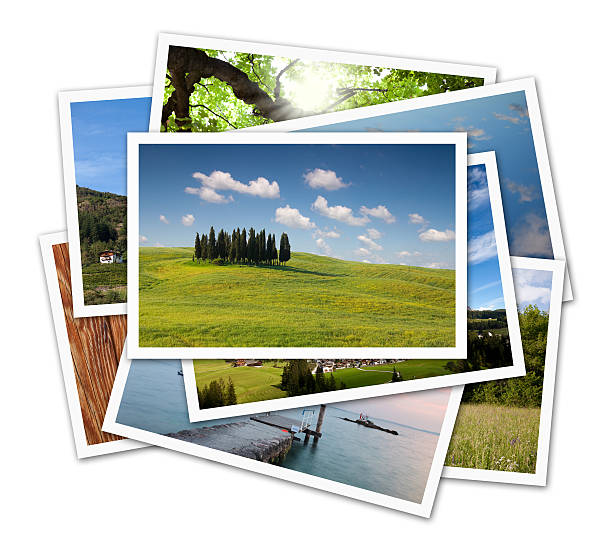Creating an engaging and functional photography website is crucial for building a successful online presence. Whether you’re a landscape photographer, portrait specialist, or commercial photographer, your website is often the first interaction potential clients have with your work. A well-designed photography website can showcase your portfolio, demonstrate your style, and even attract paying clients. We’ll explore some of the best photography websites for inspiration. We’ll analyze what makes them stand out in terms of design, content, and user experience. Additionally, we’ll look at photography websites that feature unique functionalities such as e-commerce, interactive elements, and virtual galleries.
Top Photography Websites to Get Inspired
Looking at successful photography websites can provide valuable insights and inspire your own web design choices. Here, we highlight some top photography websites across different niches.

Landscape Photography Websites
Landscape photography websites often have large, high-resolution images that serve as the centerpiece of the design. These websites need to showcase the beauty of nature and the photographer’s expertise while maintaining a clean, navigable layout.
Example 1: Michael Shainblum Photography
Michael Shainblum is a renowned landscape photographer, and his website does a great job of showcasing his stunning work. The site features full-screen background images with a minimalist design, allowing visitors to focus on the photography. The use of large images with simple navigation makes it easy for users to explore different galleries, while the inclusion of a blog provides insight into the photographer’s techniques.
What Makes It Great:
- High-quality, full-screen images
- Minimalist design that lets the photography speak for itself
- Simple navigation with clear calls to action
- Blog section for sharing photography tips and behind-the-scenes content
Portrait Photography Websites
Portrait photography websites focus on capturing the essence of people, so the website needs to reflect the photographer’s style and personality. A portfolio website for portraits should showcase diverse shots, from individual portraits to group photos.
Example 2: Mark Lobo Photography
Mark Lobo’s portrait photography website is a great example of using imagery to tell a story. The design is clean and professional, with large, high-quality images front and center. The website makes it easy for potential clients to learn about services and book appointments. Lobo also uses a blog to feature client stories, adding a personal touch to the website.
What Makes It Great:
- Personal and intimate design that highlights the human element
- Easy-to-navigate service pages with booking options
- High-quality portraiture that grabs attention
- Clear call to action for booking services
Fine Art Photography Websites
Fine art photographers often need to create a space that is as much about their artistic vision as it is about the images themselves. The website design should reflect the unique nature of the work, providing an immersive and engaging experience.
Example 3: Sam Abell Photography
Sam Abell’s website is a great example of how to design a fine art photography website that is both functional and artistic. His website features a portfolio of his work that is divided into sections based on themes. It’s simple but allows for a clear representation of his artistic vision. The navigation is clean, and the website emphasizes storytelling through images.
What Makes It Great:
- Clean, artistic design that lets the work speak for itself
- Intuitive navigation with distinct sections for different themes
- Emphasis on storytelling through photos
- Minimal distractions, allowing users to focus on the art
Commercial Photography Websites
Commercial photographers need websites that effectively demonstrate their ability to create images for businesses and brands. These websites should highlight the photographer’s versatility and professionalism.
Example 4: Joe McNally Photography
Joe McNally, a highly respected commercial photographer, showcases his work in a highly polished, professional website. The site includes a strong portfolio section, showing off his diverse range of work, from corporate headshots to large-scale advertising campaigns. The clear structure and emphasis on high-quality visuals make it easy for potential clients to see the photographer’s range and quality of work.
Related Posts:
- Photography Websites with Unique Features
- How to Design a Stunning Photography Website
- How to Connect Your Website to Host Your Photography Website
What Makes It Great:
- Well-structured, professional design
- Clear sections for different types of work (e.g., editorial, commercial, advertising)
- Strong portfolio that demonstrates versatility
- Client testimonials that add credibility

Photography Websites with Unique Features
In today’s digital world, photographers are going beyond traditional portfolios and incorporating unique features into their websites. These features can elevate a website from simply being a portfolio to an interactive and engaging experience.
Interactive Photography Websites
Interactive websites allow visitors to engage with the content in a more immersive way. For photographers, this could mean interactive slideshows, photo galleries with hover effects, or an interactive map of your photoshoots.
Example 5: Daniel Murtagh Photography
Daniel Murtagh’s website features an interactive image gallery that allows users to explore his work in different ways. The website uses hover effects, enabling users to see more information about each image when they hover over it. This adds a dynamic and engaging element to the user experience.
What Makes It Great:
- Interactive image gallery with hover effects
- Easy-to-navigate portfolio with multiple viewing options
- Engaging design that encourages visitors to explore
Virtual Galleries and Digital Experiences
For photographers who want to showcase their fine art or high-end photography, a virtual gallery or digital experience can set them apart. Virtual galleries allow users to experience the work as if they were walking through a physical gallery.
Example 6: Jonathan M. Katz Photography
Jonathan M. Katz’s website features a virtual gallery that allows users to view his work as if they were attending an exhibition. The website’s digital gallery mimics the look and feel of a real-world gallery, with photos that visitors can zoom in on and explore in detail. This immersive experience makes it feel like users are stepping into the artist’s world.
What Makes It Great:
- Virtual gallery for an immersive experience
- High-quality image zoom functionality
- Thoughtful design that reflects the artist’s style
Portfolio Websites with E-commerce Functionality
Adding e-commerce functionality to your portfolio website allows you to sell prints, offer digital downloads, or even sell photography workshops. This can generate a passive income stream and provide additional value to your visitors.
Example 7: Alex Strohl Photography
Alex Strohl’s website blends his portfolio with an e-commerce function, allowing visitors to buy prints directly from the site. The website features beautiful images, easy navigation, and clear calls to action for purchasing. It also allows users to select different print sizes and formats, providing a seamless shopping experience.
What Makes It Great:
- E-commerce functionality for selling prints
- Simple and easy-to-use layout
- Integration of the portfolio and e-commerce sections
FAQs: Common Questions About Photography Website Design
What makes a photography website successful?
A successful photography website should have a clean, user-friendly design, showcase high-quality images, and provide easy navigation. It should also reflect the photographer’s style and offer clear calls to action, such as booking forms or e-commerce options.
How can I make my photography website stand out?
Incorporating unique features like interactive galleries, virtual tours, or e-commerce functionality can set your website apart. Additionally, maintaining a clear, cohesive design that highlights your best work is essential.
Should I include a blog on my photography website?
Including a blog can help you engage with visitors, share photography tips, and improve SEO. It’s also a great way to showcase your expertise and build a stronger connection with your audience.
Key Takeaways
Creating an exceptional photography website goes beyond just uploading images. By drawing inspiration from top photography websites, you can design a site that showcases your work in the best possible light, engages your visitors, and meets your business goals. Whether you’re looking to create an interactive experience, sell prints, or provide a gallery-like atmosphere, incorporating unique features into your website can set you apart from the competition.
- Top Photography Websites: Examples of successful websites come from various niches, including landscape, portrait, fine art, and commercial photography.
- Unique Features: Interactive galleries, virtual experiences, and e-commerce functionality can enhance the user experience.
- Effective Design: A clean, user-friendly design that highlights your work is crucial to a successful photography website.
- Functionalities: Incorporating e-commerce or virtual galleries can provide additional revenue streams and engagement for your visitors.
